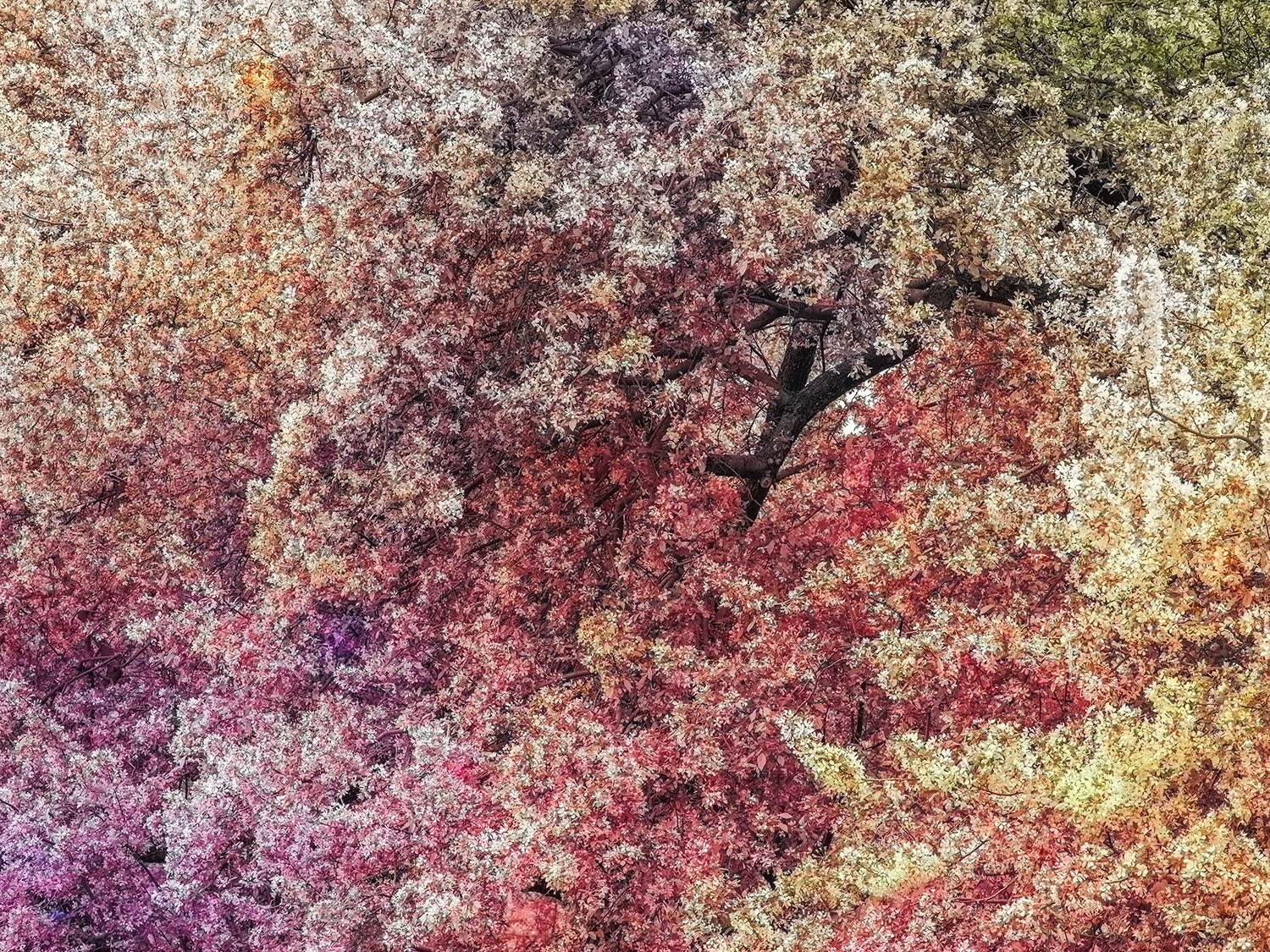#photography2050:
Ian Bourland
6. Mai 2019

TREVOR PAGLEN, BLOOM, 2020 © TREVOR PAGLEN, COURTESY THE ARTIST AND PACE GALLERY
6. Mai 2019
»The last exhibition I saw as the pandemic swept Europe was Kate Crawford and Trevor Paglen’s Training Humans at Fondazione Prada in Milan. With its blend of interactive facial-recognition software and still-photograph archive of efforts by computers to sort images of humans, the show was appropriately apocalyptic.
Whatever awaits us on the far side of the present crisis, we will again have to reckon with the proliferation of surveillance, the networking of the world through handheld devices, and the ethics of drone warfare. Most of these machines perceive the world through arrays of glass eyes, see by way of ever-smarter AI. László Moholy-Nagy’s modernist dreams of photographic prothesis finally came true.

In 2050, when an incalculable number of images – what we once called
photographs – are made every second (and when deepfakes will be made on
toddlers’ iPads), this simulacral realm will mean everything and
nothing. The decades ahead will mark further lens-mediated artworld
democratization, especially for the Global South and zones of uneven
development; they will also be rife with clever appropriations by the
likes of Paglen, Hito Steyerl, and others. At some point, the noise will
simply outpace the signal.
The photos we do value will be
like the vinyl records of 2020: niche throwbacks to simpler times,
perhaps made in the presence of the viewer. Get ready for the immediacy
of the Polaroid, the viscid tactility of the tin type. But then, given
our current climate trajectory, all the above might never come to pass.
Roving the desert wastelands of our analog future might mean that 19th-century tech itself is a rarity, the rare paper photograph a wistful curiosity from our frivolous days of plenty.«
Ian Bourland ist Assistant Professor of Art History an der Georgetown University, USA und arbeitet als Contributing Editor für das frieze Magazine.
Bild: Trevor Paglen, Bloom, 2020 © Trevor Paglen, courtesy the artist and Pace Gallery